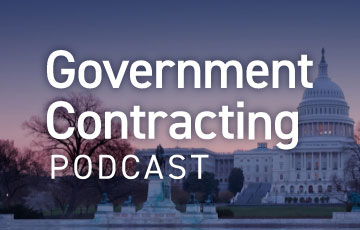In February, the Naval Sea Systems Command (NAVSEA) confirmed that the Seaport-E Multiple Award Contract (MAC) vehicle will be ending in 2019 and replaced with Seaport Next Generation (Seaport-NxG).
NAVSEA started the Seaport contract vehicle in 2001 to maximize savings in procuring Professional Support Services (PSS). At the time, NAVSEA had more than 450 separate PSS contracts supporting its requirements. What started with 21 prime contractors grew into almost 3,200 prime contractors on Seaport-E. With that growth in contractors, the administrative costs to manage all of those schedules also increased. If the surge in contractors increased the competitiveness of solicitations, NAVSEA might not have as much of a concern with the costs. However, that isn’t happening.
As of December 2016, an estimated 50 percent of all small business prime contractors have submitted proposals as a prime. Additionally, roughly 78 percent of all large business prime contractors have submitted proposals. With 90 percent of Seaport-E schedule holders being a small business, that is a large population of contracts that the government is maintaining whose owners are not participating in the program.
Because of the increasing costs to manage thousands of vendor schedules, and especially the hundreds of vendors who do not propose on opportunities, NAVSEA is ending the Seaport-E schedule and creating the Seaport-NxG schedule. There will be similarities between the schedules (e.g., allowing for small business consideration), but some major changes will also occur. Where Seaport-E is broken down into seven zones based on regions across the United States, Seaport-NxG will no longer separate contract holders into zones; all MAC holders will have the opportunity to submit proposals for any zone.
Another major change in Seaport-NxG will be in regards to the functional areas. Seaport-E contains 22 distinct functional areas; Seaport-NxG is expected to have two broad functional areas — Engineering Support Services and Program Management Support Services. There will then be 29 subcategories between the two large functional areas.
Lastly, where Seaport-E only required a contractor to have prior Department of Defense experience, Seaport-NxG is expected to require more narrowly tailored experience specific to the Department of the Navy, which must be verifiable through the Contractor Performance Assessment Reporting System, government endorsement, or the like.
The pre-solicitation is currently available on FedBizOpps and is expected to be open for submission by the summer. The solicitation is expected to close by September 2018, and new schedule awards will be made by the second or third quarter of 2019.
For more information or to discuss how Cherry Bekaert can help you with your Seaport-NxG proposal, please contact a member of the Cherry Bekaert Government Contractor Services team.



